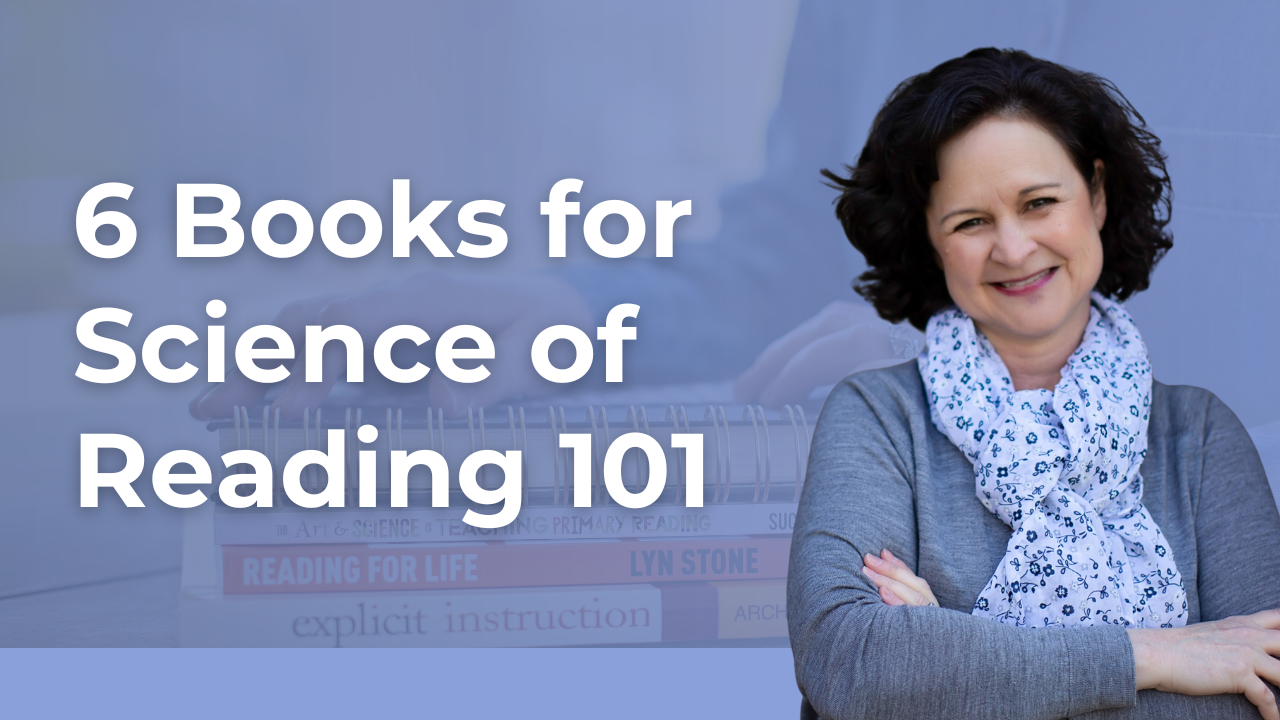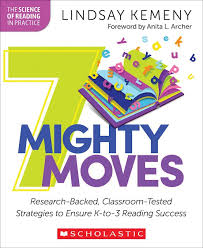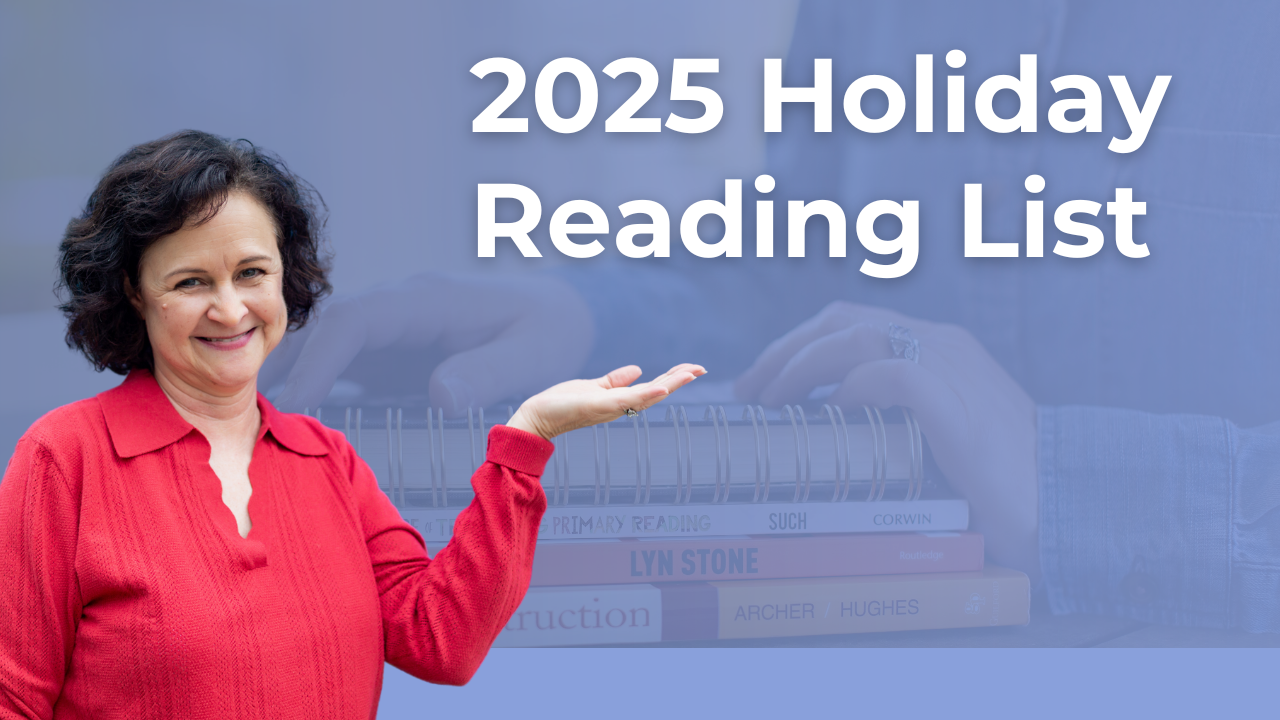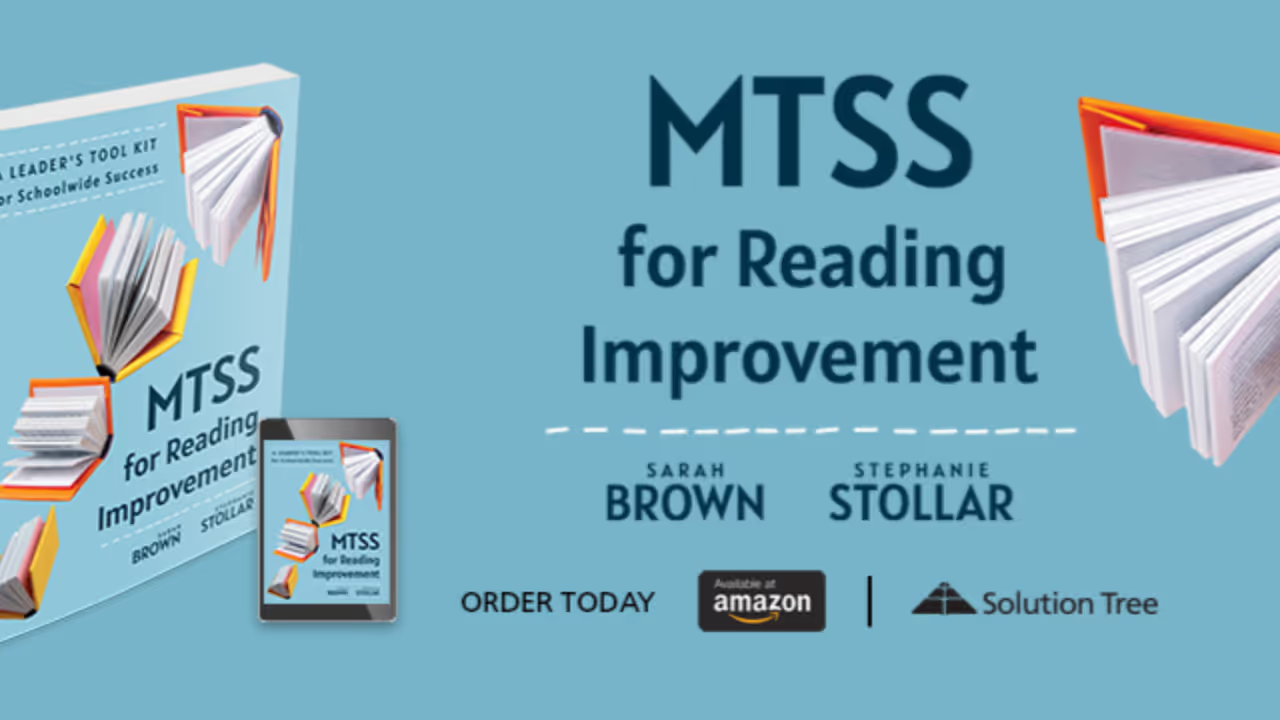Stephanie Stollar’s 2025 Holiday Book List for educators features must-read titles on literacy, MTSS, explicit instruction, and cognitive science. It’s perfect for teachers, coaches, and professors planning professional development over winter break.
October 1, 2025
6 Entry-Level Science of Reading Books Every Teacher Should Own (and Why They Matter)

If you’ve been hearing about the science of reading but feel overwhelmed, you’re not alone. Many teachers were never trained in this approach during their preparation programs, and the flood of information can be intimidating.
The good news? Several excellent books make the science of reading clear, practical, and actionable.
Below, I’ve rounded up six of the best titles to start your journey. They span many Literacy 101 topics, covering MTSS, assessment, dyslexia, and explicit instruction. Each one is linked, so you can grab a copy for your professional bookshelf.
What Is the Definition of the Science of Reading?
The science of reading is a body of interdisciplinary research from fields like cognitive science, linguistics, neuroscience, and education. It explains how the brain learns to read and which instructional practices are most effective. Rather than being a single program or curriculum, the science of reading is a collection of evidence that guides teachers on how to deliver instruction that works effectively for all students.
Science of Reading vs. Balanced Literacy
Balanced literacy often relies on cues, leveled readers, and memorization. These strategies don’t align with how the brain learns to read. The science of reading emphasizes systematic phonics, decoding, and language development, ensuring students build the skills they need to comprehend text. While balanced literacy can leave struggling readers behind, the science of reading provides a framework that helps all students, including those with dyslexia and other learning challenges.
Evidence-Based Reading Instruction
The methods used in the books I recommend are proven by research, not just tradition or opinion. This includes explicit teaching of phonemic awareness, phonics, fluency, vocabulary, and comprehension. It also means using data from assessments to guide instruction through frameworks like MTSS. By sticking to evidence-based practices, teachers maximize student success and close long-standing achievement gaps.
Why Every Teacher Should Learn the Science of Reading
The science of reading is grounded in decades of cognitive and educational research that shows how children actually learn to read. Every teacher, whether in kindergarten or high school, benefits from this knowledge because it helps prevent reading failure, supports struggling students, and strengthens instruction for all learners.
When teachers understand the science of reading, they are empowered to make instructional choices that are aligned with evidence, not trends or guesswork.
How the Science of Reading Transforms Classroom Instruction
Shifting to a science of reading approach transforms classrooms from whole-language guessing games into places where reading is explicitly taught. Teachers move beyond balanced literacy strategies and instead focus on phonics, decoding, fluency, vocabulary, and comprehension. With clear, systematic instruction, students gain the foundational skills needed to become confident, independent readers. The result? More students will meet benchmarks and fewer will fall behind.
What to Look for in a Beginner-Friendly Science of Reading Book
If you’re new to the science of reading, start with a book that explains the research in plain language and offers fundamental classroom strategies. Look for texts that:
- Translate theory into practice.
- Provide examples of instructional routines you can try immediately.
- Cover core literacy areas, including phonics, fluency, vocabulary, and comprehension.
- Highlight how MTSS can support implementation.
The beginner-friendly books I recommend below make the science of reading accessible and actionable, even if it wasn’t part of your teacher training.
My Top 6 Recommendations for Science of Reading 101 for K-12 Educators
1. Reach All Readers by Anna Geiger

If you only choose one book, start here. Anna Geiger shares her honest journey of discovering the science of reading after years of teaching without it. This approachable book covers essential early literacy skills, writing connections, and dyslexia. Uniquely, it positions MTSS as the framework for implementation. It’s relatable, research-based, and practical.
2. Seven Mighty Moves by Lindsay Kemeny

Lindsay Kemeny brings the classroom to life in this practical guide. She outlines seven specific “moves” that shift old practices into evidence-based routines. With QR codes linking to classroom examples, this is a hands-on book you can implement right away.
3. Reading for Life by Lyn Stone

Written by a linguist, this book digs into the language structures that underpin literacy. Lyn Stone explains why written language can be challenging for some students, especially those with dyslexia, and how to adjust instruction accordingly. It’s part of a larger series and perfect if you want to go deeper into the linguistics side of reading.
4. The Art and Science of Teaching Primary Reading by Christopher Such

Organized around the simple view of reading, Christopher Such balances research and practice beautifully in this book. Each short chapter includes summaries, classroom applications, discussion prompts, and retrieval questions to facilitate learning. It’s accessible, easy to read, and excellent for book studies or professional learning communities.
5. Explicit Instruction by Anita Archer & Charles Hughes

Considered a classic in evidence-based instruction, this book details the “how” of teaching. Archer and Hughes explain explicit, systematic routines that work across content areas and grade levels. It’s ideal for teachers looking for concrete strategies and for professors training the next generation of educators.
6. Speech to Print by Louisa Moats

For educators ready to dive deep, this is the go-to text. Moats explores reading as a language-based skill, covering morphology, syntax, and other structures. The third edition now includes a workbook with exercises to apply your learning. A must-have for SLPs, school psychologists, and any teacher serious about mastering the science of reading.
Building Your Science of Reading Bookshelf
Whether you’re just starting out or ready to deepen your expertise, these six books offer the perfect balance of research, practice, and practical tools. Choose one, start reading, and see the impact it makes in your classroom.
Ready to start your collection? Order your copies today and take the next step in your science of reading journey.


